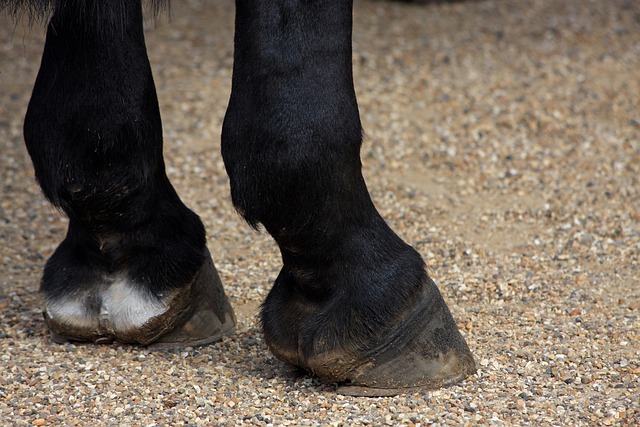What is Laminitis?

Laminitis is a painful and potentially debilitating condition affecting the hooves of horses. It involves inflammation and damage to the laminae, the soft tissues that connect the hoof wall to the coffin bone within the hoof. This condition can lead to severe lameness and, in extreme cases, permanent damage or even euthanasia.
What Causes Laminitis?
Laminitis can be triggered by various factors, and understanding these causes is crucial for prevention and management. The primary causes include:
- Poor diet: Consuming excessive amounts of carbohydrates, such as grains or lush pasture, can lead to laminitis. This overload can cause a spike in blood sugar and insulin levels, leading to inflammation in the laminae.
- Obesity: Overweight horses are at a higher risk of developing laminitis due to increased strain on their hooves and metabolic imbalances.
- Endocrine disorders: Conditions like Equine Metabolic Syndrome (EMS) and Cushing's Disease (PPID) can predispose horses to laminitis.
- Mechanical stress: Excessive weight-bearing on a single limb, often due to an injury in another leg, can lead to laminitis in the supporting limb.
- Toxins: Infections or illnesses that release toxins into the bloodstream can also trigger laminitis.
Effects of Laminitis
The effects of laminitis are serious and can vary in severity. Key symptoms and consequences include:
- Lameness: Affected horses often show signs of lameness, particularly in the front hooves, and may exhibit a characteristic "rocking back" stance to relieve pressure on their front feet.
- Heat and Pulsation: Increased heat and a strong digital pulse in the affected hooves are common indicators.
- Hoof Changes: Chronic laminitis can lead to structural changes in the hoof, such as rings around the hoof wall, a widened white line, and, in severe cases, rotation or sinking of the coffin bone.
- Pain: The condition is extremely painful, and horses may be reluctant to move or lie down frequently to avoid standing on their sore hooves.
Horse Feed to Help Manage Laminitis
Proper nutrition plays a critical role in managing and preventing laminitis. Here are some dietary recommendations to help support horses at risk of or recovering from laminitis:
- Low-Sugar and Low-Starch Feed: Feeding low-sugar and low-starch diets can help regulate blood sugar and insulin levels, reducing the risk of laminitis. Look for feeds specifically formulated for metabolic conditions.
- High-Fibre Diet: A diet high in fibre from sources like mature hay can help maintain steady blood sugar levels and support gut health.
- Forage First: Prioritize forage over concentrates. Providing access to good quality hay and limiting grazing on lush pastures can help control carbohydrate intake.
- Balanced Nutrition: Ensure the diet is balanced with essential vitamins and minerals, possibly with the help of a vitamin and mineral balancer to avoid deficiencies.
- Supplements: Consider supplements that support hoof health, such as biotin, zinc, and methionine, and those that help manage inflammation and metabolic health, such as omega-3 fatty acids and magnesium.
Consulting with a veterinarian or equine nutritionist can help create a tailored feeding plan that addresses the specific needs of your horse, helping to manage and prevent laminitis effectively.
Conclusion
Laminitis is a serious condition that requires careful management and prevention strategies. Understanding the causes, recognizing the symptoms, and implementing appropriate dietary measures are crucial steps in safeguarding your horse's health. At Equi-Box, we offer a range of horse feeds and supplements that can support horses prone to laminitis.
Posted on: 17/06/2024





